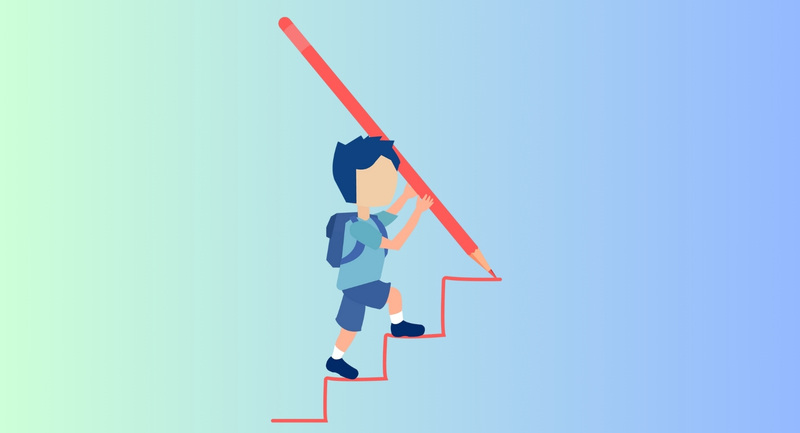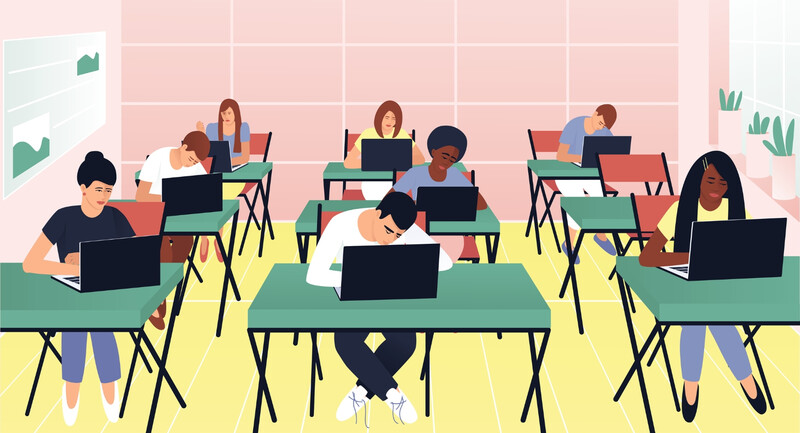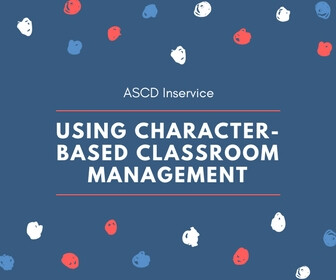We’ve heard quite a lot about “learning loss” or “learning recovery” over the last year and a half. Since COVID-19’s disruption, researchers, policymakers, and education leaders have been trying to take stock of just how much learning students missed since March 2020. Concerns about the short- and long-term effects that the pandemic will have on students’ academic progress and social-emotional well-being have been a constant. But questions about students’ pandemic learning, especially when framed around the notion of “learning loss,” can be complicated for educators.
This was clear during ASCD’s @ELMagazine Twitter chat (#ELMagChat) on September 15, which centered around Educational Leadership recent issue on “Education’s New Era.” We posed the question, “What approaches are you using to address potential learning disruptions and instructional gaps from last year?”
Participants quickly raised concerns about the complex nature of helping students mitigate lost time after such a traumatic year. They pointed out red flags around overtesting and remediation and the education industry’s compulsion to sort and categorize students based on isolated standardized tests. Boni Fernandes Wozolek, an assistant professor at Penn State University Abington, tweeted that the issue is also about the term “learning loss” itself, which implies a deficit lens and has racist roots tracing back to “ideologies that disproportionately impact Black [and] Brown students.”
“I think it's unproductive to frame it as catching up, which implies we need to double down and make up for lost instructional time,” school counselor Phyllis Fagell wrote in a reply. “If anything, we need to dial it back and be patient with kids. Their stamina is down. Let's meet them where they are and establish a sustainable pace.”
Others highlighted the complexity of the issue from a pedagogical perspective. “It's incredibly challenging to counter the learning loss narrative as an ed leader,” educator-author Paul Emerich France tweeted. “I want to respect people's worries, but also am fiercely defending equity and asset-based thinking in schools . . . . I just keep coming back to: what's the rush? And why does it matter that they're in a different place according to academic measures that we know are harmful?”
Yet school leaders also need to be forthright about acknowledging and addressing the reality of learning gaps, particularly given the potential equity issues involved. “Learning disruptions are very real,” U.S. Secretary of Education Miguel Cardona said in a recent Educational Leadership interview. “So many students have experienced interrupted or unfinished instruction.”
So how can schools confront the “learning loss” issue constructively? What strategies can help students readjust to school life and make up potential lost ground without causing further trauma or stigmatization?
Measuring the “Gaps”
Researchers have tried to quantify just how much academic ground students have lost during the pandemic, using data from testing programs and from other past disruptions like natural disasters. A December 2020 report by the group McKinsey & Company, which looked at the learning of K-5 students, found that on average, students could be about seven months behind in academics. Those gaps were estimated to be more severe for students of color, partially because of disparities in technology access and resources.
Another estimate from Brown University and Harvard University, which tracked learning in the online math program Zearn from pre-pandemic years through May 2021, found that students’ mathematics progress went down 8.5 percent. At the same time, a spring 2021 study from Renaissance Learning, which included 3.8 million students in grades 1-8, found that students had made progress similar to other years in reading and math on progress-monitoring assessments—a sign that not every study is showing lower scores.
Some researchers have also looked at the combined effects of remote learning’s toll on academic loss and on students’ social-emotional health, which they named “the thriving gap.” High school students who were remote struggled more academically, socially, and emotionally compared to peers who learned in-person, according to a study released by the American Educational Research Association in July. This “thriving gap” was consistent across the categories of gender, race, ethnicity, and wealth.
In light of such findings, it makes sense that schools and policymakers would want to estimate learning gaps after last year and take action to get students up to speed, Yong Zhao, a professor of education at the University of Kansas, wrote in a recent blog post. The issue, however, is that becoming too focused on measuring the loss may lead to an overreliance on standardized testing (which can only capture a portion of students’ learning and cause undo pressure) and a hyper focus on reading and math at the expense of other subjects.
Money and time would be better spent, Zhao writes, “working with students and [supporting] their learning instead of taking time away from that for testing.”
A Holistic Approach
Avis Williams, the superintendent of Selma City Schools in Alabama and vice president of ASCD’s board of directors, has tried to focus her district on “learning opportunities” instead of loss. Testing is a part of that, but the district is trying to take a well-rounded approach by getting a pulse on students’ varying needs, Williams said in an interview. The district has gathered both academic assessment data through tests and social-emotional survey data with a tool called Panorama.
The Selma district’s challenges around in-person school this fall have been compounded by the community's high COVID-19 levels and low vaccination rates over the last year. Educators’ academic approach to transitioning students back, Williams says, is back to “basics” like effective small group instruction, early literacy skills in K-2 grades, and vertical teaming across grade levels.
Because math scores have dipped more than reading in the district, they are also hiring math coaches to support teachers’ instructional practices. And because some students have thrived with virtual options, the district bumped up their timeline for an already-planned virtual school called Saints Virtual Academy, which is now in operation.
Selma’s approach has been largely public facing: A strategic planning summit to solidify instructional methods for the year was streamed on Facebook Live and included a survey so families could weigh in. Williams has a weekly podcast called “Talk Sup’t” and keeps a COVID dashboard to update the school community on transmission rates.
But the biggest focus is on emotional support—such as conducting frequent student surveys around relationships, engagement, and other concerns, and creating a text hotline called “Handle with Care” that parents can use to let teachers know when their children are having a tough time emotionally. These combined methods try to address the multifaceted ways students have been affected by last year’s disruptions.
“When we think about educating the whole child, we cannot focus on the issue of ‘learning loss’ without also considering SEL pieces, mental health pieces, and overall wellness,” says Williams. “Academic outcomes will be neither here nor there if we aren’t addressing [students’] needs from a holistic standpoint.”
Avoiding the "Learning Loss Trap"
Recent ASCD contributors have made additional suggestions about how schools can navigate instruction and support this fall. While not an exhaustive list by any means, there are some methods educators can try to steer clear of what Zhao calls the “learning loss trap.”
- Focus on gains as well as losses: While not minimizing the incredible challenges of COVID-19, John Hattie says that it’s important to remember the areas in which students and teachers have grown (such as self-directed learning) and focus on how schools can build on those new skills.
- Center emotional healing and humanity—including in personalization: Personalizing learning by tailoring activities to students’ individual struggles and strengths is an important part of this new education era, says educator-author Paul Emerich France. One path to healing he recommends is to humanize personalized learning: Have students share personal stories, center collaborative learning, and use a combination of whole-group, small-group, and individualized instruction to encourage students to connect with one another.
- Avoid testing too early: Keep in mind that tests conducted early in the school year (before review) aren’t always the best indicators of what students do and don’t know, write educators Kate Jones, Dylan Wiliam, and Robert A. Bjork. If students cannot recall something they learned months (or even years) ago in the moment, research on memory shows that they may still know the material; they just need a refresher to bring that information back to the surface.
- Gain forward momentum: Educators can also focus on looking ahead instead of back by zeroing in on prerequisite skills and assignments students need for grade-level units, says Thomas Guskey. They should also ensure that students have some early academic successes that they can build on, rather than just deficit-centered experiences.
- Plan around learning targets: Instead of fixating on losses, Lisa Westman suggests formulating clear learning targets by “centering your planning process around success criteria and formative assessment.” To make that happen, teachers will need “instructional clarity,” with clear ideas of what learning looks like, including the focus standard and learning intentions.
- Study alternative models of assessment: As teachers look to help students recover from disruption, Boni Wozolek and Allison Shafer suggest offering “multiple forms and opportunities for students to demonstrate their knowledge, so we can move past the vestiges of sorting students.” One suggestion for another assessment form? Performance tasks to check for deeper learning, which can assess multiple standards, prompt complex thinking, and allow students to apply their learning.
How are you navigating learning with students this year? Send us a note to let us know at blog@ascd.org.








